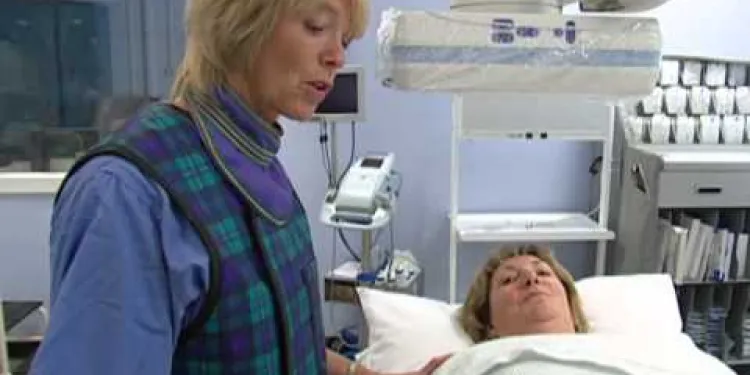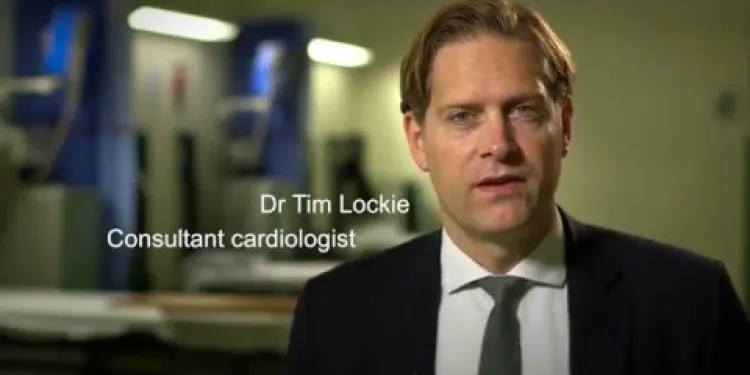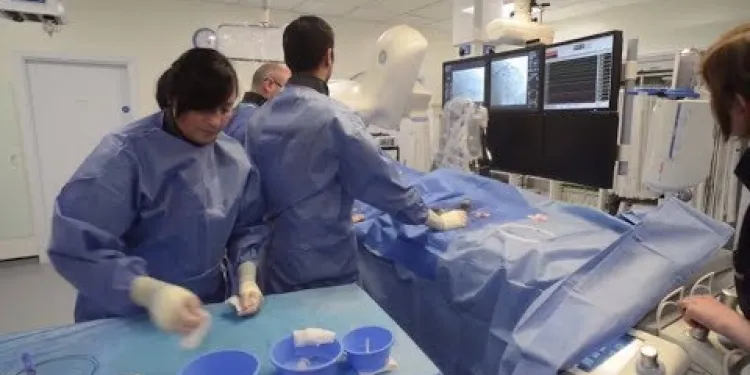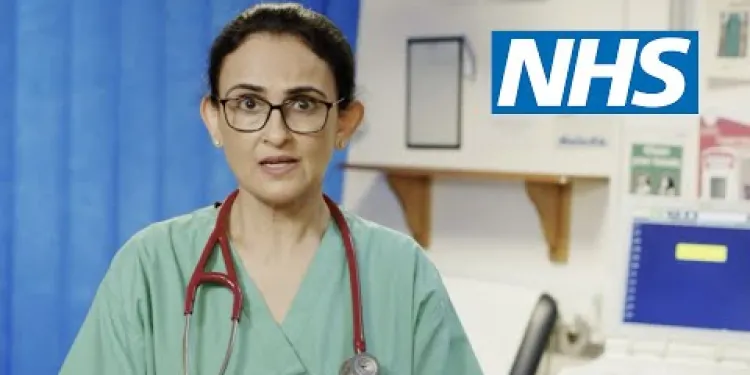Find Help
More Items From Ergsy search
Having a CT Angiogram in Tayside
What is a CT Angiogram?
A CT Angiogram, or Computed Tomography Angiography, is a specialized imaging test used to visualize the arteries and veins in your body. It helps in detecting blockages, aneurysms, and other vascular conditions. During the procedure, a contrast material (dye) is injected into your bloodstream, and a CT scanner captures detailed images of your blood vessels.
Importance of a CT Angiogram
CT Angiograms are pivotal in diagnosing various cardiovascular conditions. They provide clear, precise images, allowing healthcare professionals to assess issues such as coronary artery disease, peripheral artery disease, and other vascular abnormalities. Early detection and accurate diagnosis are crucial for effective treatment and management of these conditions.
The Procedure in Tayside
In Tayside, the CT Angiogram procedure is typically carried out in a hospital or a specialized imaging center. On the day of the appointment, you will be guided to the radiology department where a trained radiologist will explain the procedure in detail. You will be asked to change into a hospital gown and lie on a CT scanner bed. An intravenous (IV) line will be inserted to administer the contrast dye. During the scan, you will need to remain still while the machine captures images. The entire process usually takes about 30 to 60 minutes.
Preparation and Aftercare
Before the procedure, you may be advised to avoid eating or drinking for a few hours. If you are allergic to contrast dye or have kidney problems, inform your healthcare provider beforehand. After the CT Angiogram, it's crucial to stay hydrated to help flush out the dye from your system. You can typically resume normal activities immediately unless your doctor advises otherwise.
Getting Results
The images from your CT Angiogram will be analyzed by a radiologist, who will compile a report for your referring doctor. This process usually takes a few days. Your doctor will discuss the results with you and recommend any necessary treatments or further tests.
NHS Services in Tayside
The National Health Service (NHS) in Tayside offers CT Angiograms as part of its cardiology services. The facilities in Tayside are equipped with state-of-the-art technology and staffed by experienced medical professionals, ensuring safe and effective procedures for all patients.
Conclusion
Having a CT Angiogram in Tayside is a straightforward and informative process designed to diagnose and evaluate various vascular conditions. Understanding the procedure, preparation, and aftercare can help alleviate any anxieties and ensure a smooth experience. Trust in the expertise and care provided by Tayside's healthcare professionals to deliver the best possible outcomes for your health.
Having a CT Angiogram in Tayside
What is a CT Angiogram?
A CT Angiogram is a special test that takes pictures of your arteries and veins. Doctors use it to find blockages or problems in your blood vessels. During the test, a dye is injected into your veins, and a big machine called a CT scanner takes pictures.
Why is a CT Angiogram Important?
CT Angiograms help doctors see if you have heart problems or other blood vessel issues. They show clear pictures so doctors can understand what is wrong and treat it quickly.
The Procedure in Tayside
You will have your CT Angiogram at a hospital in Tayside. On the day of your appointment, you will go to the radiology department. A trained person will explain what will happen. You will change into a gown and lie on a bed. A needle will be used to give you the dye. You need to stay still while the machine takes pictures. The test takes about 30 to 60 minutes.
How to Prepare and What to Do After
Before the test, you might not be allowed to eat or drink for a few hours. Tell your doctor if you are allergic to dye or have kidney problems. After the test, drink water to help your body get rid of the dye. You can usually go back to normal activities unless your doctor says not to.
Getting Your Results
A doctor will look at the pictures from your CT Angiogram and write a report. This takes a few days. Your doctor will talk to you about the results and let you know if you need any treatment.
NHS Services in Tayside
The NHS in Tayside provides CT Angiograms as part of their heart services. They use modern machines and have skilled staff to make sure the test is safe and helpful for everyone.
Conclusion
Getting a CT Angiogram in Tayside is easy and helps find problems with your blood vessels. Knowing what to expect can help you feel less worried. Trust the doctors and staff in Tayside to take good care of you.
Frequently Asked Questions
What is a CT Angiogram?
A CT Angiogram is a medical imaging procedure that uses a CT scanner to visualize blood vessels and tissues in your body. It helps diagnose conditions related to blood vessels and the heart.
Why do I need a CT Angiogram?
You may need a CT Angiogram to detect and evaluate conditions such as aneurysms, blockages, or other abnormalities in your blood vessels or heart.
How do I prepare for a CT Angiogram?
You will be given specific instructions, but generally, you may need to fast for a few hours before the procedure. Inform your doctor about any allergies or current medications.
How long does the CT Angiogram take?
The entire procedure generally takes between 30 minutes to an hour, with the scanning process itself lasting about 10-15 minutes.
Will the CT Angiogram be painful?
The procedure is usually painless. You might feel a slight discomfort from the needle when the contrast dye is injected, and possibly a warm sensation temporarily.
Can I drive home after a CT Angiogram?
Yes, you can usually drive home after the procedure unless you have received a sedative. In that case, arrange for someone to drive you home.
What happens during the procedure?
During the CT Angiogram, you will lie on a table that moves through the CT scanner. A contrast dye will be injected to highlight your blood vessels, and images will be captured.
Are there any risks associated with a CT Angiogram?
The procedure is generally safe, but there are minor risks such as allergic reactions to the contrast dye or exposure to radiation. Discuss any concerns with your doctor.
What should I do after the CT Angiogram?
After the procedure, you can usually resume your normal activities. Drink plenty of fluids to help flush the contrast dye from your system.
When will I get the results?
Your doctor will typically receive the results within a few days and will discuss them with you at your follow-up appointment.
Do I need to stop taking my medications before the procedure?
Inform your doctor about your medications. Some may need to be paused, but only under medical advice.
Can pregnant women have a CT Angiogram?
CT Angiograms are typically avoided during pregnancy due to radiation exposure. Alternative imaging methods may be considered.
Is a referral needed for a CT Angiogram?
Yes, you will need a referral from your GP or a specialist to undergo a CT Angiogram.
What should I wear to the procedure?
Wear comfortable clothing. You may be asked to change into a hospital gown for the procedure.
Will I experience any side effects?
Most patients do not experience side effects. However, some may feel slight discomfort, a brief warm sensation, or mild nausea from the contrast dye.
What is a CT Angiogram?
A CT Angiogram is a special picture of your blood vessels. It helps doctors see how blood is moving in your body. To get this picture, you might need a needle and some special liquid to make your blood vessels show up better.
If you find this hard to read, you can ask someone to help you read it. Or, you can use tools that read the words out loud for you.
A CT Angiogram is a special scan that takes pictures inside your body. It helps doctors see your blood vessels and tissues. This can help find problems with your heart and blood vessels.
Why do I need a CT Angiogram?
A CT Angiogram is a special scan. It takes pictures of blood vessels. Doctors use it to check if your blood is flowing well.
Here’s why you might need one:
- Check for any problems in your blood vessels.
- See how blood is moving in your body.
- Help doctors find out why you feel unwell.
To help understand better, you can use:
- Pictures or drawings of the body.
- Ask a friend or family member to read with you.
- Watch a simple video about CT scans.
You might need a CT Angiogram. This is a special test that helps doctors see inside your body. It can find problems like bulges (called aneurysms), clogs, or other issues in your blood vessels or heart.
How do I get ready for a CT Angiogram?
A CT Angiogram is a special picture of your blood vessels. Here is how you can get ready:
1. **Talk to Your Doctor:** Ask your doctor if you need to stop eating before the test.
2. **Tell About Allergies:** If you have any allergies, especially to medicine or food, tell the nurse or doctor.
3. **Take Medications as Directed:** If you take medicine every day, ask the doctor if you should take it on the day of the test.
4. **Wear Comfortable Clothes:** Wear loose clothes without any metal, like zippers or buttons.
5. **Ask Questions:** If you do not understand something, ask the nurse or doctor to explain it to you. It is okay to ask for help.
**Tools and Tips:**
- Use a picture dictionary to understand new words.
- Bring a friend or family member if you need support.
- Write down your questions so you remember to ask them.
It is important to follow these steps to be ready for the test. The people at the hospital will help you, too.
Your doctor will tell you what to do before the procedure. Usually, you can't eat or drink for a few hours. Tell your doctor if you are allergic to anything or if you are taking any medicine.
If you need help reading or understanding, you can ask someone you trust to explain it to you. You can also use apps that read text out loud.
How long will the CT Angiogram last?
A CT Angiogram is a special picture of your body. It takes about 30 minutes.
You might wait a little bit before or after.
It can help to bring a book or music. This can keep you busy while you wait.
The whole process usually takes 30 minutes to 1 hour. The scanning part takes about 10 to 15 minutes.
Will the CT Angiogram hurt?
This test doesn’t hurt. When the doctor uses the needle, you might feel a little poke. After, you might feel warm for a little bit.
Can I drive home after a CT Angiogram?
A CT Angiogram is a picture of your heart and blood vessels. You might feel sleepy or dizzy after the test. It is a good idea to have someone drive you home. If you feel fine, you might be able to drive, but it's safer to have help.
Tools that can help you:
- Ask a friend or family member to drive you.
- Use public transport if you feel okay.
- Ask the doctor or nurse if you have questions.
Yes, you can usually drive home after the procedure. But if you took medicine that makes you sleepy, ask someone to drive you home.
What happens during the procedure?
Here is what happens when you have the procedure:
- You will go to a special room.
- The doctor and nurses will be there to help you.
- You may get some medicine that makes you sleepy so you don't feel anything.
- The doctor will use tools to do the procedure.
- The doctor and nurses will talk to you and tell you what is happening.
You can ask questions if you are worried. Having someone you trust with you can help you feel better.
When you have a CT Angiogram, you will lie on a table. The table will move through a big machine called a CT scanner. A special dye will be put into your body. This dye helps to see your blood vessels clearly. Then, pictures will be taken.
Are there any risks with a CT Angiogram?
A CT Angiogram is a special picture of your blood vessels. Your doctor uses it to see how your blood moves in your body.
There are a few things to think about:
- You might feel warm when the dye is put in your body.
- Sometimes people are allergic to the dye.
- The test uses a little bit of radiation, like an X-ray.
Before the test, you can:
- Talk to your doctor if you're worried.
- Ask a friend or family member to go with you.
This procedure is mostly safe. But there are some small risks. You might have an allergy to the special dye or get too much radiation. Talk to your doctor if you are worried.
What do I do after the CT scan?
After your CT scan, make sure to rest. You can go home and relax. Drink plenty of water. This helps your body stay healthy.
If you feel tired or dizzy, sit down and rest. Tell someone if you feel sick.
Ask your doctor if you have questions. It is important to follow their advice.
Remember, it is okay to ask for help. You can use pictures or apps to help understand what the doctor says.
After the test, you can go back to what you usually do. Drink lots of water to help remove the special dye from your body.
When will I get the results?
You will get your results when they are ready. It might take some time.
If you want to know more about when you will get your results, you can:
- Ask someone to help you understand the timeline.
- Look at a calendar to see the days.
- Talk to the person who is checking the results to find out.
Your doctor usually gets the test results in a few days. They will talk about them with you at your next appointment.
Should I stop taking my medicine before the procedure?
Ask your doctor if you need to stop taking your medicine before the procedure. Your doctor will tell you what is best.
If you find it hard to understand, you can:
- Ask someone to explain it to you.
- Use pictures or drawings to help you understand.
- Write down your questions to ask your doctor.
- Use a voice recorder to remember what your doctor says.
Tell your doctor about the medicine you take. Some medicines might need to be stopped. Only stop them if your doctor says it's okay.
Can pregnant women have a CT Angiogram?
A CT Angiogram is a special picture of the inside of your body. Doctors use it to look at blood flow. But, this test uses X-rays.
It is important to be careful with X-rays when pregnant. X-rays can sometimes be harmful to a growing baby.
If you are pregnant, tell your doctor. They will help decide if the test is safe for you and the baby.
Here are some things you can do:
- Ask questions to understand why the test is needed.
- Ask if there are other tests without X-rays.
- Make sure your doctor knows you are pregnant.
Supporting tools like pictures can help understand what a CT Angiogram is.
Doctors usually do not use CT Angiograms when someone is pregnant because of radiation. They might use different tests instead.
Do I need a note from my doctor for a CT Angiogram?
Yes, you need your doctor to say it's okay for you to have a CT Angiogram. This could be your family doctor or another doctor who knows about your health.
What clothes should I wear for the procedure?
Wear comfy clothes. Something soft and easy to move in is best. Like a T-shirt and sweatpants. Leave jewelry at home. You might get a special gown to wear at the place. Ask someone if you're not sure.
If reading is hard, you can ask a friend or family to help. You can also use a read-aloud app to listen to the text.
Wear clothes that feel good and are not tight. You might need to put on a special hospital outfit for the procedure.
Will I feel different?
Most people do not have side effects. But some might feel a little uncomfortable. They might feel warm for a short time or feel a bit sick because of the special dye.
Useful Links
- Ergsy carfully checks the information in the videos we provide here.
- Videos shown by Youtube after a video has completed, have NOT been reviewed by ERGSY.
- To view, click the arrow in centre of video.
- Most of the videos you find here will have subtitles and/or closed captions available.
- You may need to turn these on, and choose your preferred language.
- Go to the video you'd like to watch.
- If closed captions (CC) are available, settings will be visible on the bottom right of the video player.
- To turn on Captions, click settings .
- To turn off Captions, click settings again.






